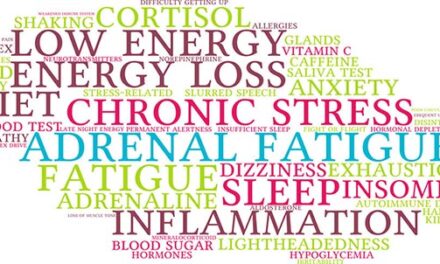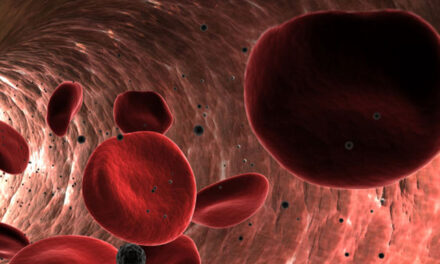Which supplements should people take to help promote good health, and at what doses? Vitamins? Minerals? Herbs? Nutraceuticals? Perhaps the best answer is before experimenting with exotic dietary supplement ingredients, it first makes sense to start out with the three dietary supplements that everyone should be taking. This includes a multivitamin, vitamin D and omega- fatty acids.
MULTIVITAMINS
There is a good case for the daily use of a multivitamin, as a nutrition insurance policy that helps to fill in the gaps for those nutrients people may not be getting in their diet. Furthermore, in a study1 of 90,771 men and women, the regular use of a multivitamin was found to significantly improve adequate intake of nutrients compared to non-users. Also, research2 found that multivitamin supplements are generally well tolerated, do not increase the risk of mortality, cerebrovascular disease, or heart failure, and their use likely outweighs any risk in the general population (and may be particularly beneficial for older people). So, the bottom line is that multivitamins really do work as a nutrition insurance policy.
Other multivitamin benefits
In addition to functioning as a nutrition insurance policy, the daily use of a multivitamin may offer other benefits as well.
Cardiovascular Disease
A 12-week, randomized, placebo-controlled study3 of 182 men and women (24 to 79 years) found that a multivitamin was able to lower homocysteine levels and the oxidation of LDLcholesterol—both of which are highly beneficial in reducing the risk for cardiovascular disease. Other multivitamin research4 has also demonstrated effectiveness in lowering homocysteine levels.
A 6-month, randomized, double-blind, placebo-controlled study5 of 87 men and women (30 to 70 years) found that multivitamin use was associated with lower levels of C-reactive protein, a measurement of inflammation associated with cardiovascular disease and other degenerative diseases. Other multivitamin research6 in women has shown similar results.
A Swedish, population-based, case-control study7 of 1296 men and women (45 to 70 years) who previously had a heart attack and 1685 healthy men and women as controls, found those using a multivitamin were less likely to have a heart attack. Other multivitamin research8 in Swedish women has shown similar results.
Cancer:
A large-scale, randomized, double-blind, placebo-controlled study9 was conducted with 14,641 male U.S. physicians initially 50 years or older, including 1312 men with a history of cancer, to determine the long-term effects of multivitamin supplementation on the incidence of various types of cancers. Results showed that during a median follow-up of 11.2 years, men with a history of cancer who took a daily multivitamin had a statistically significant reduction in the incidence of total cancer compared to those taking a placebo.
Stress/Energy:
A human clinical study10 with 96 healthy men (18 to 46 years) examined the effect of multivitamin supplementation in relation to plasma interleukin-6 (IL-6, a pro-inflammatory chemical produced by the body) and anger, hostility, and severity of depressive symptoms. The results showed that plasma IL-6 was associated with anger, hostility, and severity of depressive symptoms, and that multivitamin use was associated with lower plasma IL-6 levels.
A review11 of the scientific literature indicated that patients complaining of fatigue, tiredness, and low energy levels may have low levels of vitamins and minerals. Certain risk groups like the elderly and pregnant women were identified, as was the role of B-vitamins in energy metabolism. Results found that supplementation with nutrients including B-vitamins (e.g., a multivitamin) can alleviate deficiencies, but supplements must be taken for an adequate period of time.
A meta-analysis12 of eight randomized and placebo-controlled studies evaluated the influence of diet supplementation on stress and mood. Results showed that supplementation reduced the levels of perceived stress, mild psychiatric symptoms, anxiety, fatigue, and confusion. Supplements containing high doses of B-vitamins (e.g., multivitamins) may be more effective in improving mood states.
Aging:
At the ends of our chromosomes are stretches of DNA called telomeres. These telomeres protect our genetic data, making it possible for cells to divide. Each time a cell divides, telomeres get shorter. When they get too short, the cell can no longer divide and becomes inactive or “senescent” or dies. This process is associated with aging. In a cross-sectional analysis of data from 586 women (35 to 74 years), multivitamin use was assessed, and relative telomere length was measured. The results were that multivitamin use was significantly associated with longer telomeres. Compared with nonusers, the relative telomere length was on average 5.1 percent longer among daily multivitamin users. It is possible, therefore, that multivitamins may help us live longer.
VITAMIN D
Vitamin D is the “sunshine vitamin,” so coined because exposure to the sun’s ultraviolet light will convert a form of cholesterol under the skin into vitamin D. This nutrient is best known for its role in helping to facilitate the absorption of calcium and phosphorus (as well as magnesium), and so helping to promote bone health.13 Over the past decade, however, research on vitamin D has identified numerous other roles it plays in human health and wellness, which includes:
- Inhibiting the uncontrolled proliferation of cells (as in the case of cancer) and stimulating the differentiation of cells (specialization of cells for specific functions).14
- Helping prevent cancers of the prostate and colon.15,16
- Functioning as a potent immune system modulator.17,18
- Helping prevent autoimmune reactions.19,20,21
- Helping improve insulin secretion.22,23,24
- Decreasing the risk of high blood pressure via the reninangiotensin system’s regulation of blood pressure.25
- Reducing osteoporotic fractures.26,27,28
- Reducing the incidence of falls in older adults.29,30
- Reducing the risk of developing premenstrual syndrome (PMS).31
- Reducing the prevalence of depression, especially in the elderly.32
- Reducing the prevalence of urinary infections and lower urinary tract symptoms (e.g., benign prostatic hyperplasia or BPH).33
Vitamin D deficiency and insufficiency
Outright vitamin D deficiency is present in 41.6 percent of the U.S. population,34 while vitamin D insufficiency (i.e., lacking sufficient vitamin D) is present in 77 percent of the world’s population.35 If you are deficient in vitamin D you will not be able to absorb enough calcium to satisfy your body’s calcium needs.36 It has long been known that severe vitamin D deficiency has serious consequences for bone health, but other research indicates that lesser degrees of vitamin D deficiency are common and increase the risk of osteoporosis and other health problems.37,38
Vitamin D sufficiency is measured by serum 25-hydroxyvitamin D levels in the body.39 Laboratory reference ranges for serum 25-hydroxyvitamin D levels are based upon average values from healthy populations. However, recent research examining the prevention of secondary hyperparathyroidism and bone loss suggest that the range for healthy 25-hydroxyvitamin D levels should be considerably higher. Based upon the most current research, here are the ranges for serum 25-hydroxyvitamin D values:
- Less than 20–25 nmol/L: Indicates severe deficiency associated with rickets and osteomalacia.40,41
- 50–80 nmol/L: Previously suggested as normal range.42
- 75–125 nmol/L: More recent research suggests that parathyroid hormone43,44 and calcium absorption45 are optimized at this level; this is a healthy range.46
Based upon the 75–125 nmol/L range, it is estimated that one billion people in the world are currently vitamin D deficient.47 Furthermore, research indicates that supplementation with at least 800–1,000 IU daily are required to achieve serum 25-hydroxyvitamin D levels of at least 80 nmol/L.48,49 Furthermore, there are many groups of individuals who currently are at risk for vitamin D deficiency. These include:
- Exclusively breast-fed infants: Especially if they do not receive vitamin D supplementation and if they have dark skin and/or receive little sun exposure.50
- Dark skin: People with dark-colored skin synthesize less vitamin D from sunlight than those with light-colored skin.51 In a U.S. study, 42 percent of African American women were vitamin D deficient compared to four percent of white women.52
- The Elderly: When exposed to sunlight have reduced capacity to synthesize vitamin D.53
- Those using sunscreen: Applying sunscreen with an SPF factor of eight reduces production of vitamin D by 95 percent.54
- Those with fat malabsorption syndromes: The absorption of dietary vitamin D is reduced in Cystic fibrosis and cholestatic liver disease.55
- Those with inflammatory bowel disease: An increased risk of vitamin D deficiency occurs in those with inflammatory bowel disease like Crohn’s disease.56
- Obese individuals: Obesity increases the risk of vitamin D deficiency.57
Vitamin D2 and D3
There are two forms of vitamin D available as a dietary supplement: cholecalciferol (vitamin D3) and ergocalciferol (vitamin D2). Cholecalciferol is the form made in the human body, and it is more active than ergocalciferol. In fact, Vitamin D2 potency is less than one third that of vitamin D3.58
Commercially, ergocalciferol is derived from yeast, and so is considered vegetarian, while cholecalciferol is commonly derived from lanolin (from sheep) or fish oil—although a vegetarian D3 derived from lichen is available.
Ideal dosing for vitamin D
The Linus Pauling Institute recommends that generally healthy adults take 2,000 IU of supplemental vitamin D daily.59 The Vitamin D Council states that if well adults and adolescents regularly avoid sunlight exposure, then it is necessary to supplement with at least 5,000 IU of vitamin D daily.60 The Council for Responsible Nutrition recommends 2,000 IU daily for adults.61 Taking a conservative position, at least 2,000 IU of vitamin makes sense for adults.
OMEGA-3 FATTY ACIDS
Chemically, a fatty acid is an organic acid that has an acid group at one end of its molecule, and a methyl group at the other end.62 Fatty acids are typically categorized in the omega groups 3, 6 and 9 according to the location of their first double bond (there’s also an omega 7 group, but these are less important to human health).63 The body uses fatty acids for the formation of healthy cell membranes, the proper development and functioning of the brain and nervous system, and for the production of hormone-like substances called eicosanoids (thromboxanes, leukotrienes, and prostaglandins). These chemicals regulate numerous body functions including blood pressure, blood viscosity, vasoconstriction, immune and inflammatory responses.64
Deficiency of omega-3 fatty acids
While omega-3, 6 and 9 fatty acids are all important for different reasons, it is the omega-3 fatty acids (O3FA) that are currently particularly critical—and specifically the O3FA known as eicosapentaenoic acid (EPA) and docosahexaenoic acid (DHA). The reason for this current importance is that Western diets are deficient in O3FA, and have excessive amounts of omega-6 fatty acids. While human beings evolved on a diet with approximately a 1:1 ratio of omega-6 to omega-3 fatty acids (EFA), the current Western diet provides about a 16:1 ratio.65 As a matter of fact, a recent Harvard School of Public Health study indicates that Omega-3 deficiency causes 96,000 U.S. deaths per year.66 Other research has clearly shown that excessive amounts of omega-6 fatty acids and a very high omega-6 to omega-3 ratio, as is found in today’s Western diets, promote many diseases, including cardiovascular disease, cancer, and inflammatory and autoimmune diseases, whereas increased levels of omega-3 (a low omega-6 to omega-3 ratio) exert protective effects.67
Benefits of omega-3 fatty acids
O3FA offer a broad range of benefits in human health. These benefits are listed below categorically:
Cardiovascular Health
In several studies O3FA have been shown to help lower triglyceride levels.68 In fact, the FDA has even approved an O3FA product for this purpose.69 Individually, EPA and DHA also have triglyceride-lowering properties. Consuming 1 gram/day of fish oils from fish (about 3 ounces of fatty fish such as salmon) or fish oil supplements has a cardioprotective effect.70
Evidence suggests increased consumption of O3FA from fish or fish-oil supplements, but not of alpha-linolenic acid, reduces the rates of all-cause mortality, cardiac and sudden death, and possibly stroke.71 Higher consumption of fish and O3FA has been associated with a lower risk of coronary heart disease.72,73 Clinical research shows that DHA supplementation helps increase HDL cholesterol levels (the “good cholesterol”).74,75 Supplementation with fish oil produces modest, but significant reductions in systolic and diastolic blood pressure in patients with mild hypertension.76,77,78
Inflammation
O3FA have been shown to help relieve inflammation caused by a variety of factors.79,80
Arthritis
Research81 has demonstrated that fish oil supplementation is effective in the treatment of rheumatoid arthritis.
Menopause
Clinical research shows that taking supplements with 500 mg EPA, three times daily, modestly but significantly reduces the frequency of hot flashes compared to placebo in menopausal women.82
ADHD
Research has shown children with attention deficit/hyperactive disorder (ADHD) may have low plasma levels of EPA and DHA.83,84 Clinical research suggests that supplementation with DHA might improve aggression and social relationships in ADHD children.85
Macular degeneration
Increased dietary consumption of DHA is associated with reducing the risk of macular degeneration.86
Alzheimer’s Disease
Participants who consumed fish once per week or more had 60 percent less risk of Alzheimer’s disease compared with those who rarely or never ate fish, and this was attributed to the DHA content of the fish.87
The sources of omega-3 fatty acids
To begin with, the overwhelming majority of research on the health benefits of supplementation with O3FA has been conducted using fish oil products. Consequently, a strong argument can be made that fish oil supplements are the preferred source of O3FA. Amongst these, the primary fish used commercially as the source from which O3FA are derived include mackerel, herring, tuna, halibut, salmon and cod liver.88 Although some fish are touted as superior over others as sources for supplemental fish oil, it is the opinion of this author that they all provide acceptable sources of omega-3s. Still, there are other sources of O3FA besides fish oil. This includes squid, krill, flax seed oil and algae oil.
Squid
Squid-derived O3FA are derived from by-products of squid that are usually discarded when squid are commercially fished, and provides a much higher concentration of DHA (up to 50 percent) than do fish oil. However, there is a lack of human clinical data on squid-source O3FA, although they likely will have similar effects as fish oil.
Krill
Krill oil derived from the shrimp-like crustacean know as krill contain significant amounts of the EPA and DHA omega-3 fatty acids, as well as phospholipids (e.g., phosphatidylcholine),89 vitamin A, vitamin E and astaxanthin, a powerful carotenoid antioxidant.90,91 Human clinical research92 has shown that krill oil has greater absorption than fish oil—although krill provides significantly less EPA/DHA per gram than fish oil.
Flaxseed
Flaxseed oil contains about 52–55 percent omega-3s, but as alpha-linolenic acid (ALA), not EPA/DHA.93 This is significant since ALA has to be converted to EPA and DHA before it will provide the much-touted health benefits attributed to O3FA. This is problematic since studies indicate that in men approximately eight percent of ALA is converted to EPA and 0–4 percent is converted to DHA.94 In women, approximately 21 percent of dietary ALA is converted to EPA and nine percent is converted to DHA.95 This is not to say that flaxseed oil has no value. It does, but just not as significant a value as fish oil.
Algae oil
Certain algae extracts provide a vegetarian source of O3FA—but in this case the O3FA are EPA and DHA, not ALA. Consequently, for vegetarians, algae oil is a viable substitute for fish oil. That being said, human clinical research on algae oil sources of O3FA is limited, and the cost is far more than fish oil.
References:
- Murphy SP, White KK, Park SY, Sharma S. Multivitamin-multimineral supplements’ effect on total nutrient intake. Am J Clin Nutr. 2007 Jan;85 (1):280S–4S.
- Ward E. Addressing nutritional gaps with multivitamin and mineral supplements. Nutr J. 2014 Jul 15;13(1):72. 43 Earnest CP, Wood KA, Church TS.
- Complex Multivitamin Supplementation Improves Homocysteine and Resistance to LDL-C Oxidation. J Am Coll Nutr. 2003;22(5):400–7.
- den Heijer M, Brouwer IA, Bos GM, et al. Vitamin supplementation reduces blood homocysteine levels: a controlled trial in patients with venous thrombosis and healthy volunteers. Arterioscler Thromb Vasc Biol. 1998 Mar;18(3):356–61.
- Church TS, Earnest CP, Wood KA. James B. Kampert. Reduction of C-Reactive Protein Levels Through Use of a Multivitamin. Am J Med. 2003;115:702–7.
- Wang C, Li Y, Zhu K, Dong YM, Sun CH. Effects of supplementation with multivitamin and mineral on blood pressure and C-reactive protein in obese Chinese women with increased cardiovascular disease risk. Asia Pac J Clin Nutr. 2009;18(1):121–30.
- Holmquist C, Larsson S, Wolk A, de Faire U. Multivitamin Supplements Are Inversely Associated with Risk of Myocardial Infarction in Men and Women— Stockholm Heart. Epidemiology Program (SHEEP). J Nutr. 2003;133: 2650–4.
- Rautiainen S, Akesson A, Levitan EB, Morgenstern R, Mittleman MA, Wolk A. Multivitamin use and the risk of myocardial infarction: a population-based cohort of Swedish women. Am J Clin Nutr. 2010 Nov;92(5):1251–6.
- Gaziano JM, Sesso HD, Christen WG, Bubes V, Smith JP, MacFadyen J, Schvartz M, Manson JE, Glynn RJ, Buring JE. Multivitamins in the prevention of cancer in men: the Physicians’ Health Study II randomized controlled trial. JAMA. 2012 Nov 14;308(18):1871–80.
- Suarez EC. Plasma interleukin-6 is associated with psychological coronary risk factors: moderation by use of multivitamin supplements. Brain Behav Immun. 2003 Aug;17(4):296–303.
- Huskisson E, Maggini S, Ruf M. The role of vitamins and minerals in energy metabolism and well-being. J Int Med Res. 2007 May–Jun;35(3):277–89.
- Long SJ, Benton D. Effects of vitamin and mineral supplementation on stress, mild psychiatric symptoms, and mood in nonclinical samples: a metaanalysis. Psychosom Med. 2013 Feb;75(2):144–53.
- Holick MF. Vitamin D: importance in the prevention of cancers, type 1 diabetes, heart disease, and osteoporosis. Am J Clin Nutr. 2004;79(3):362–71.
- Ibid.
- Lin R, White JH. The pleiotropic actions of vitamin D. Bioessays. 2004; 26(1):21–8.
- Gorham ED, Garland CF, Garland FC, et al. Vitamin D and prevention of colorectal cancer. J Steroid Biochem Mol Biol. 2005;97(1-2):179–94.
- Griffin MD, Xing N, Kumar R. Vitamin D and its analogs as regulators of immune activation and antigen presentation. Annu Rev Nutr. 2003;23:117–45.
- Hayes CE, Nashold FE, Spach KM, Pedersen LB. The immunological functions of the vitamin D endocrine system. Cell Mol Biol. 2003;49(2):277–300.
- Ibid.
- Munger KL, Zhang SM, O’Reilly E, et al. Vitamin D intake and incidence of multiple sclerosis. Neurology 2004;62:60–5.
- Merlino LA, Curtis J, Mikuls TR, et al. Vitamin D intake is inversely associated with rheumatoid arthritis. Arthritis Rheum 2004;50:72–7.
- Zeitz U, Weber K, Soegiarto DW, Wolf E, Balling R, Erben RG. Impaired insulin secretory capacity in mice lacking a functional vitamin D receptor. FASEB J. 2003;17(3):509–11.
- Borissova AM, Tankova T, Kirilov G, Dakovska L, Kovacheva R. The effect of vitamin D3 on insulin secretion and peripheral insulin sensitivity in type 2 diabetic patients. Int J Clin Pract. 2003;57(4):258–61.
- Inomata S, Kadowaki S, Yamatani T, Fukase M, Fujita T. Effect of 1 alpha (OH)-vitamin D3 on insulin secretion in diabetes mellitus. Bone Miner. 1986;1(3):187–192.
- Li YC, Kong J, Wei M, Chen ZF, Liu SQ, Cao LP. 1,25-Dihydroxyvitamin D(3) is a negative endocrine regulator of the renin-angiotensin system. J Clin Invest. 2002;110(2):229–38.
- Feskanich D, Willett WC, Colditz GA. Calcium, vitamin D, milk consumption, and hip fractures: a prospective study among postmenopausal women. Am J Clin Nutr. 2003;77(2):504–511.
- Bischoff-Ferrari HA, Willett WC, Wong JB, Giovannucci E, Dietrich T, Dawson-Hughes B. Fracture prevention with vitamin D supplementation: a meta-analysis of randomized controlled trials. JAMA. 2005;293(18):2257–64.
- Bischoff-Ferrari HA, Giovannucci E, Willett WC, Dietrich T, Dawson-Hughes B. Estimation of optimal serum concentrations of 25-hydroxyvitamin D for multiple health outcomes. Am J Clin Nutr. 2006;84(1):18–28.
- Bischoff-Ferrari HA, Dawson-Hughes B, Willett WC, et al. Effect of Vitamin D on falls: a meta-analysis. JAMA 2004;291:1999–2006.
- Bischoff HA, Stahelin HB, Dick W, et al. Effects of vitamin D and calcium supplementation on falls: a randomized controlled trial. J Bone Miner Res 2003;18:343–51.
- Bertone-Johnson ER, Hankinson SE, Bendich A, et al. Calcium and vitamin D intake and risk of incident premenstrual syndrome. Arch Intern Med 2005;165:1246–52.
- Hoogendijk WJG, Lips P, Dik MG, Deeg DJH, Beekman ATF, Penninx BWJH. Depression Is Associated With Decreased 25-Hydroxyvitamin D and Increased Parathyroid Hormone Levels in Older Adults. Archives of General Psychiatry 2008; 65(5):495.
- Vaughan CP, Johnson TM 2nd, Goode PS, Redden DT, Burgio KL, Markland AD. Vitamin D and lower urinary tract symptoms among US men: results from the 2005–2006 National Health and Nutrition Examination Survey. Urology. 2011 Dec;78(6):1292–7.
- Forrest KY, Stuhldreher WL. Prevalence and correlates of vitamin D deficiency in US adults. Nutr Res. 2011;31(1):48–54.
- Ginde AA, Liu MC, Camargo CA Jr. Demographic differences and trends of vitamin D insufficiency in the US population, 1988-2004. Arch Intern Med. 2009;169:626–32.
- Holick MF. Vitamin D: A millenium perspective. J Cell Biochem. 2003;88(2):296–307.
- Heaney RP. Long-latency deficiency disease: insights from calcium and vitamin D. Am J Clin Nutr. 2003;78(5):912–9.
- Zittermann A. Vitamin D in preventive medicine: are we ignoring the evidence? Br J Nutr. 2003;89(5):552–72.
- Wharton B, Bishop N. Rickets. Lancet. 2003;362(9393):1389–1400. 40 Heaney RP. Long-latency deficiency disease: insights from calcium and vitamin D. Am J Clin Nutr. 2003;78(5):912–919.
- Ibid. 79
- Malabanan A, Veronikis IE, Holick MF. Redefining vitamin D insufficiency. Lancet. 1998;351(9105):805–6.
- Chapuy MC, Preziosi P, Maamer M, et al. Prevalence of vitamin D insufficiency in an adult normal population. Osteoporos Int. 1997;7(5):439–43.
- Thomas MK, Lloyd-Jones DM, Thadhani RI, et al. Hypovitaminosis D in medical inpatients. N Engl J Med. 1998;338(12):777–83.
- Heaney RP, Dowell MS, Hale CA, Bendich A. Calcium absorption varies within the reference range for serum 25-hydroxyvitamin D. J Am Coll Nutr. 2003;22(2):142–6.
- Holick MF. Vitamin D deficiency: what a pain it is. Mayo Clin Proc. 2003;78(12):1457–9.
- Holick MF. Vitamin D deficiency. N Engl J Med. 2007;357(3):266–281.
- Vieth R. Vitamin D supplementation, 25-hydroxyvitamin D concentrations, and safety. Am J Clin Nutr. 1999;69(5):842–56.
- Tangpricha V, Koutkia P, Rieke SM, Chen TC, Perez AA, Holick MF. Fortification of orange juice with vitamin D: a novel approach for enhancing vitamin D nutritional health. Am J Clin Nutr. 2003;77(6):1478–83.
- Wagner CL, Greer FR, and the Section on Breastfeeding and Committee on Nutrition. Prevention of rickets and vitamin D deficiency in infants, children, and adolescents. American Academy of Pediatrics. 2008;122(5):1142–52.
- Ibid. 53
- Nesby-O’Dell S, Scanlon KS, Cogswell ME, et al. Hypovitaminosis D prevalence and determinants among African American and white women of reproductive age: third National Health and Nutrition Examination Survey, 1988-1994. Am J Clin Nutr. 2002;76(1):187–92.
- Harris SS, Soteriades E, Coolidge JA, Mudgal S, Dawson-Hughes B. Vitamin D insufficiency and hyperparathyroidism in a low income, multiracial, elderly population. J Clin Endocrinol Metab. 2000;85(11):4125–30.
- Ibid. 53
- Food and Nutrition Board, Institute of Medicine. Vitamin D. Dietary Reference Intakes: Calcium, Phosphorus, Magnesium, Vitamin D, and Fluoride. Washington D.C.: National Academies Press; 1999:250–87.
- Jahnsen J, Falch JA, Mowinckel P, Aadland E. Vitamin D status, parathyroid hormone and bone mineral density in patients with inflammatory bowel disease. Scand J Gastroenterol. 2002;37(2):192–9.
- Arunabh S, Pollack S, Yeh J, Aloia JF. Body fat content and 25-hydroxyvitamin D levels in healthy women. J Clin Endocrinol Metab. 2003;88(1):157–161.
- Armas LA, Hollis BW, Heaney RP. Vitamin D2 is much less effective than vitamin D3 in humans. J Clin Endocrinol Metab. 2004;89(11):5387–91.
- Higdon J, Drake VJ, DeLuca HF.Vitamin D. The Linus Pauling Institute Micronutrient Information Center 2000–2010; Last updated 11/30/10. Retrieved December 6, 2010 from http://lpi.oregonstate.edu/infocenter/vitamins/vitaminD/.
- Understanding Vitamin D Cholecalciferol. The Vitamin D Council, n.d., Retrieved December 6, 2010 from http://www.vitamindcouncil.org/.
- CRN Reacts to Institute of Medicine DRI Recommendations for Vitamin D. November 30, 2010. Retrieved December 6, 2010 from https://www.crnusa.org/CRNPR10_CRNVitDDRIresp113010.html.
- Whitney EN, Cataldo CB, Rolfes SR. Understanding Normal and Clinical Nutrition, 5th ed. Belmont, CA:West/Wadsworth; 1998:141–75.
- Jones PJH, Papamandjaris AA. “Chapter 10 – Lipids: Cellular Metabolism” IN Present Knowledge in Nutrition, 8th ed. Bowman BA, Russell RM (eds). Washington, DC: ILSI Press; 2001:104–14
- Davis B. Essential Fatty Acids in Vegetarian Nutrition. Andrews University Nutrition Department. Accessed August 18, 2005 from http://www.andrews.edu/NUFS/essentialfat.htm.
- Simopoulos AP. The importance of the ratio of omega-6/omega-3 essential fatty acids. Biomed Pharmacother. 2002;56(8):365–79.
- Danaei G, Ding EL, Mozaffarian D, et al. The Preventable Causes of Death in the United States: Comparative Risk Assessment of Dietary, Lifestyle, and Metabolic Risk Factors. PLoS Med. 2009 Apr 28;6(4):e1000058.
- Ibid. 105
- Harris WS. n-3 fatty acids and serum lipoproteins: human studies. Am J Clin Nutr. 1997;65(5 Suppl):1645S–54S.
- Lovaza: Omega-3 Acid Ethyl Esters. Retrieved August 6, 2009 from http://www.lovaza.com/index.html?banner_s=208381923&rotation_s=30492788.
- Kris-Etherton PM, Harris WS, Appel LJ. Fish consumption, fish oil, omega-3 fatty acids, and cardiovascular disease. Circulation. 2002;106(21):2747–57.
- Wang C, Harris WS, Chung M, et al. n-3 Fatty acids from fish or fish-oil supplements, but not alpha-linolenic acid, benefit cardiovascular disease outcomes in primary- and secondary-prevention studies: a systematic review. Am J Clin Nutr. 2006;84(1):5–17.
- Hu FB, Bronner L, Willett WC, et al. Fish and omega-3 fatty acid intake and risk of coronary heart disease in women. JAMA. 2002;287(14):1815–21.
- Jarvinen R, Knekt P, Rissanen H, Reunanen A. Intake of fish and long-chain n-3 fatty acids and the risk of coronary heart mortality in men and women. Br J Nutr. 2006;95(4):824–9.
- Agren JJ, Hanninen O, Julkunen A, et al. Fish diet, fish oil and docosahexaenoic acid rich oil lower fasting and postprandial plasma lipid levels. Eur J Clin Nutr 1996;50:765–71.
- Mori TA, Burke V, Puddey IB, et al. Purified eicosapentaenoic and docosahexaenoic acids have differential effects on serum lipids and lipoproteins, LDL particle size, glucose, and insulin in mildly hyperlipidemic men. Am J Clin Nutr 2000;71:1085–94.
- Prisco D, Paniccia R, Bandinelli B, et al. Effect of medium-term supplementation with a moderate dose of n-3 polyunsaturated fatty acids on blood pressure in mild hypertensive patients. Thromb Res 1998;1:105–12.
- Toft I, Bonaa KH, Ingebretsen OC, et al. Effects of n-3 polyunsaturated fatty acids on glucose homeostasis and blood pressure in essential hypertension. A randomized, controlled trial. Ann Intern Med 1995;123:911–8.
- Yosefy C, Viskoper JR, Laszt A, et al. The effect of fish oil on hypertension, plasma lipids and hemostasis in hypertensive, obese, dyslipidemic patients with and without diabetes mellitus. Prostaglandins Leukot Essent Fatty Acids 1999;61:83–7.
- Wall R, Ross RP, Fitzgerald GF, Stanton C. Fatty acids from fish: the anti-inflammatory potential of long-chain omega-3 fatty acids. Nutr Rev. 2010;68(5):280–9.
- Calder PC. n-3 polyunsaturated fatty acids, inflammation, and inflammatory diseases. Am J Clin Nutr. 2006;83:1505S–19S.
- Fortin PR, Lew RA, Liang MH, et al. Validation of a meta-analysis: the effects of fish oil in rheumatoid arthritis. J Clin Epidemiol. 1995;48(11):1379–90.
- Lucas M, Asselin G, Merette C, et al. Effects of ethyl-eicosapentaenoic acid omega-3 fatty acid supplementation on hot flashes and quality of life among middle-aged women: a double-blind, placebo-controlled, randomized clinical trial. Menopause. 2009;16:357–66.
- Stevens LJ, Zentall SS, Deck JL, et al. Essential fatty acid metabolism in boys with attention-deficit hyperactivity disorder. Am J Clin Nutr. 1995;62:761–8.
- Voigt RG, Llorente AM, Jensen CL, et al. A randomized, double-blind, placebo-controlled trial of docosahexaenoic acid supplementation in children with attention-deficit/hyperactivity disorder. J Pediatr. 2001;139:189–6.
- Hamazaki T, Hirayama S. The effect of docosahexaenoic acid-containing food administration on symptoms of attention-deficit/hyperactivity disorder-a placebo-controlled double-blind study. Eur J Clin Nutr. 2004;58:838.
- Cho E, Hung S, Willet W, et al. Prospective study of dietary fat and the risk of age-related macular degeneration. Am J Clin Nutr. 2001;73:209–18.
- Morris MC, Evans DA, Bienias JL, et al. Consumption of fish and n-3 fatty acids and risk of incident Alzheimer disease. Arch Neurol. 2003;60:940–6.
- MedlinePlus. Fish Oil. U.S. National Library of Medicine. Last reviewed–12/10/2011.
- Bottino NR. Lipid composition of two species of Antarctic krill: Euphausia superba and E. crystallorophias. Comp Biochem Physiol B 1975;50:479–84.
- Ibid.
- Dunlap WC, Fujisawa A, Yamamoto Y, et al. Notothenioid fish, krill and phytoplankton from Antarctica contain a vitamin E constituent (alphatocomonoenol) functionally associated with cold-water adaptation. Comp Biochem Physiol B Biochem Mol Biol 2002;133:299–305.
- Ulven SM, Kirkhus B, Lamglait A, Basu S, Elind E, Haider T, Berge K, Vik H, Pedersen JI. Metabolic effects of krill oil are essentially similar to those of fish oil but at lower dose of EPA and DHA, in healthy volunteers. Lipids 2011;46(1):37–46.
- Vereshagin AG and Novitskaya GV. The triglyceride composition of linseed oil. Journal of the American Oil Chemists’ Society 1965;42:970–4.
- Burdge GC, Jones AE, Wootton SA. Eicosapentaenoic and docosapentaenoic acids are the principal products of alpha-linolenic acid metabolism in young men. Br J Nutr. 2002;88(4):355–64.
- Burdge GC, Wootton SA. Conversion of alpha-linolenic acid to eicosapentaenoic, docosapentaenoic and docosahexaenoic acids in young women. Br J Nutr. 2002;88(4):411–20.











